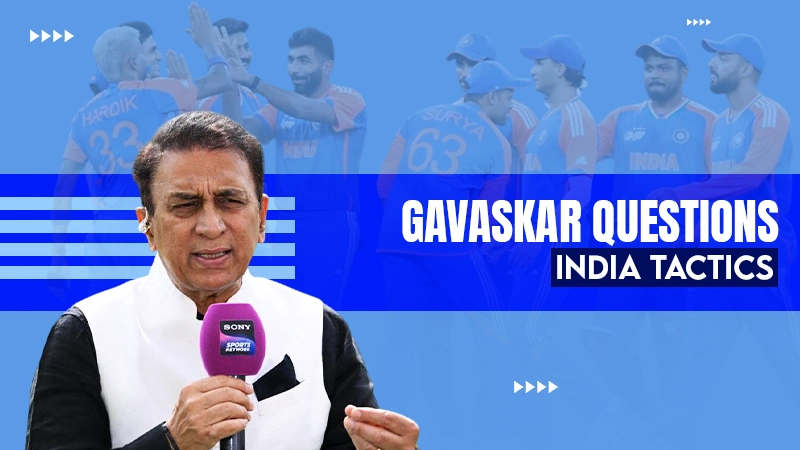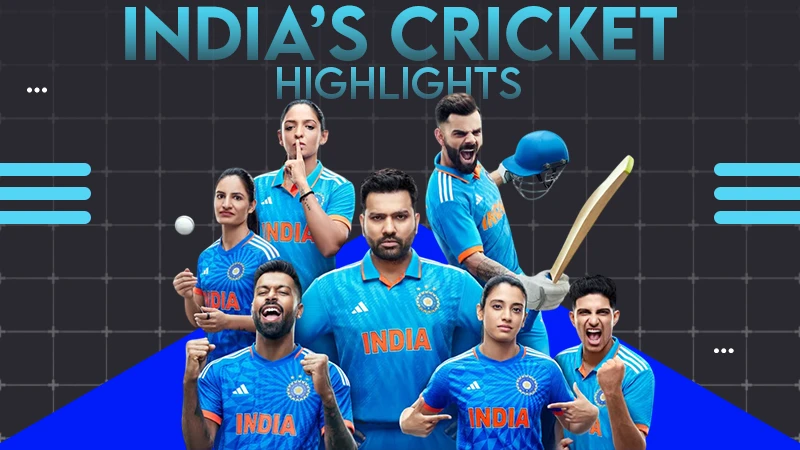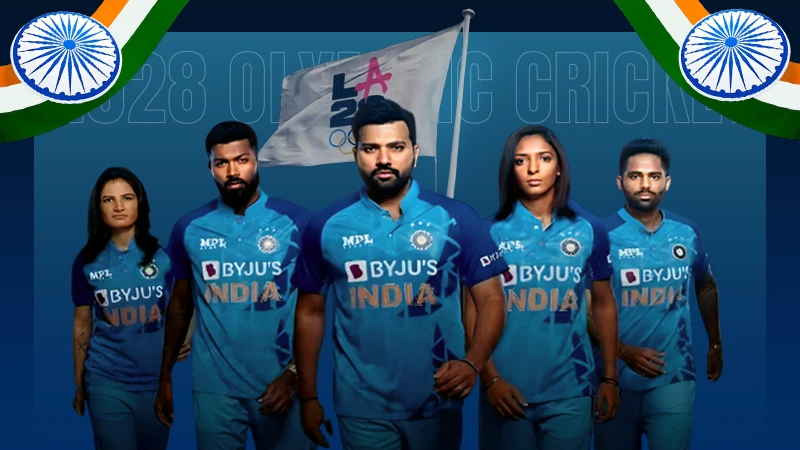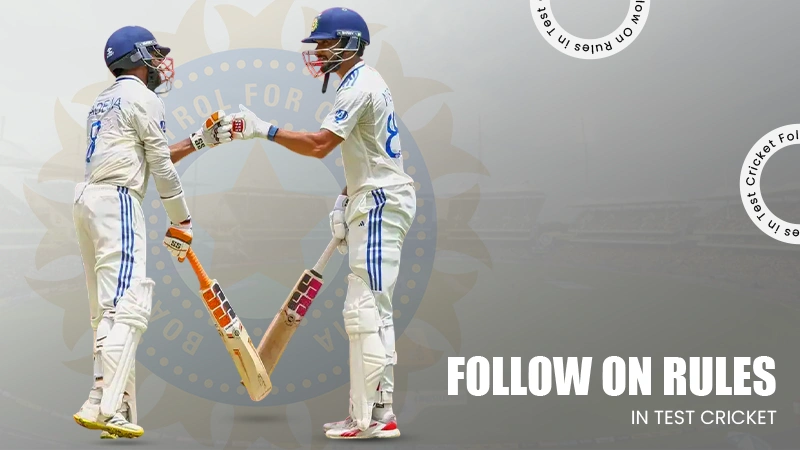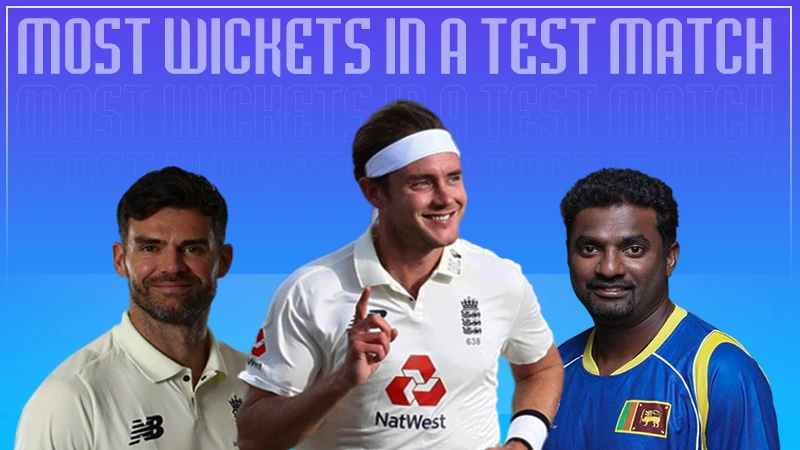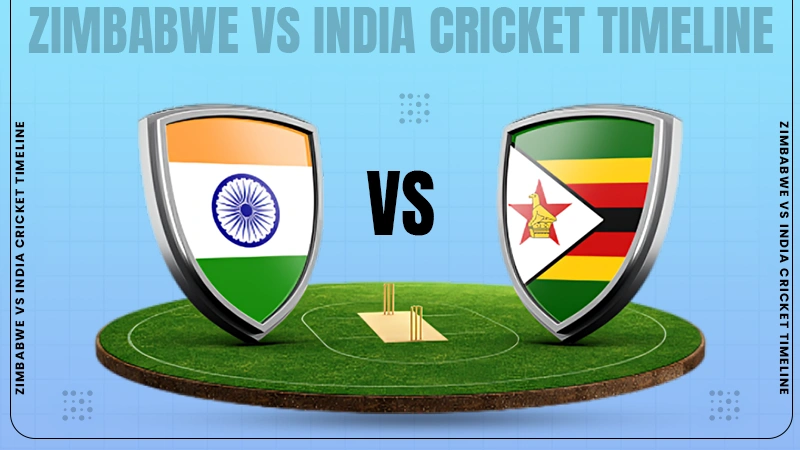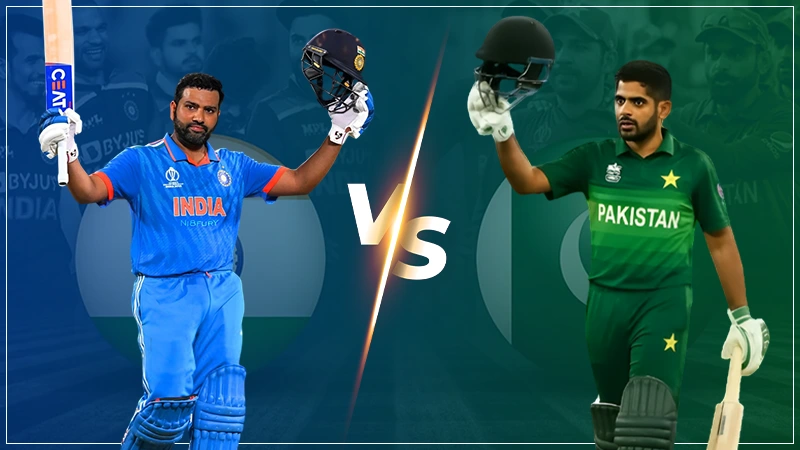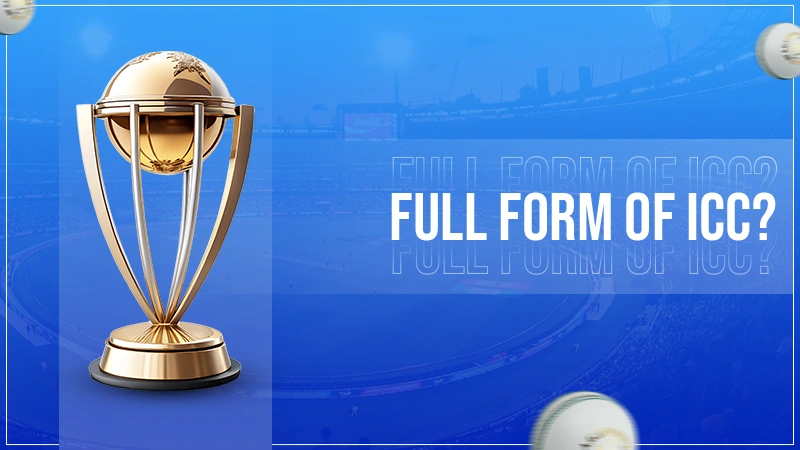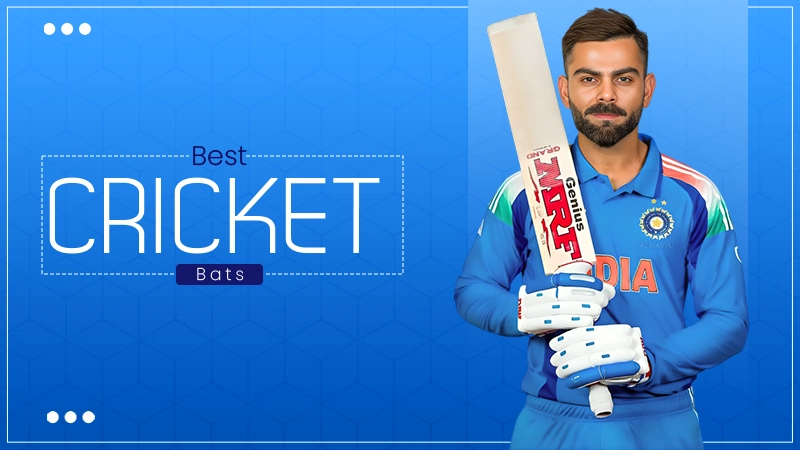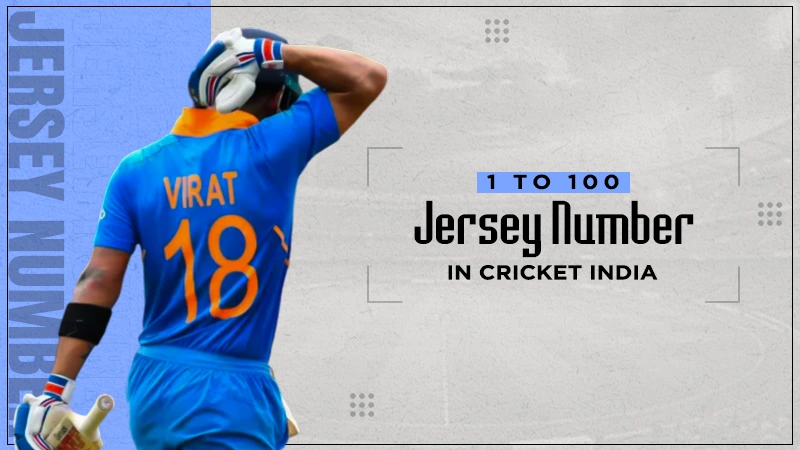
Cricket Fielding Positions: Names, Diagrams, and Roles Explained
Cricket is fundamentally more than simply batting and bowling — cricket fielding positions are a big part of every match. From a slip fielder diving for a sharp catch to a fielder stopping a boundary at deep, the positional placement of a player can determine the outcome of a game.
If you’ve ever wondered what these terms referred to when watching a cricket match, silly point or deep mid-wicket, the guide will answer it all. We will explore all cricket field positions names and their locations.
Let’s get started!
What Are Cricket Fielding Positions in Cricket?
Fielding positions in cricket refer to the specific spots on the field where players usually stand to cover the ground and stop the opposition from making runs. These positions are also used for taking caches or creating pressure on opposition batters.
The captain and bowler decide where each player should field depending on various factors. These factors include the bowler’s pace or spin, the batter’s strengths and weaknesses, and the match situation (attacking or defensive).
A cricket field is divided mainly into two sides.
- Off Side: It is the side of the batsman’s bat.
- Leg Side or On Side: It’s the opposite side to the off side, near the legs of the batsman.
Cricket has over 30 recognized fielding positions, and each of these has a unique name.
List of All Fielding Positions in Cricket (With Descriptions)
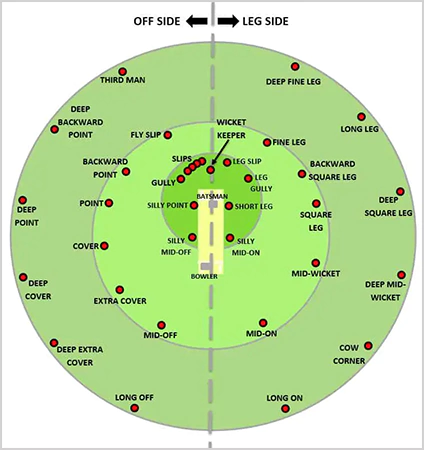
Here is the list of fielding positions named in cricket.
| Position | Area on Field | Description |
| Slip | Behind batsman (off side) | Catch edges from bowlers |
| Gully | Between slip and point | Catch thick outside edges |
| Point | Square on off side | Stop cut shots |
| Cover | Between point and mid-off | Stop drives and push shots |
| Mid-Off | Straight on off side | Stop straight drives |
| Mid-On | Straight on leg side | Stop on-side drives |
| Square Leg | Behind umpire on leg side | Stop flicks and pulls |
| Fine Leg | Deep behind batsman on leg side | Stop fine glances |
| Third Man | Behind slip, off side | Field edges and upper cuts |
| Long-Off | Deep straight boundary (off side) | Stop or catch lofted drives |
| Long-On | Deep straight boundary (leg side) | Stop or catch lofted on-side drives |
| Mid-Wicket | Between square leg & mid-on | Stop leg-side drives |
| Deep Mid-Wicket | Near boundary on leg side | Catch pulls and hooks |
| Deep Point | Near boundary square on off side | Stop square cuts |
| Sweeper Cover | Deep cover region | Stop lofted cover drives |
| Short Leg | Very close on the leg side | Catch close-in edges |
| Silly Point | Very close on off side | Catch defensive shots off spinners |
| Leg Slip | Behind the batsman, leg side | Catch edges off pads |
| Fly Slip | Deep version of slip | Used for thick edges and modern tactics |
| Cow Corner | Between long-on and deep mid-wicket | Catch big slog shots |
| Long Stop | Behind wicketkeeper (rare) | Stop missed balls |
| Backward Point | Behind point, off side | Stop late cuts |
| Extra Cover | Between cover and mid-off | Field cover drives |
Main Fielding Positions Name in Cricket
Broadly, cricket fielders are divided into three main categories based on how close they are to the batter.
Have a look at the main categories of cricket fielding positions.
Close-In Fielders
The first category is close-in fielders. They stand near the batter to catch edges and react to quick shots. The close-in fielders create pressure on the batsman by reacting quickly. They need sharp reflexes and courage.
Examples:
- Slip: This fielder is positioned behind the batsman on the off side to catch edges.
- Gully: This fielder stands between slip and point to catch thick edges from the batsman.
- Short Leg: This fielder positions himself on the leg side to catch the inside edge or flicks.
- Silly Point: This fielder stands very close on the off side towards the point direction. Usually, a silly point is used for spinners.
Inner Circle Fielders
The cricket positions within the 30-yard circle are known as inner circle fielders. They are usually there to stop singles and quick runs.
Examples:
- Point: The player stands square of the batsman on the off side. The job of a point fielder is to stop the cut shots.
- Cover: This player stands slightly in front of the point and fields drives on the off side.
- Mid-Off and Mid-On: These are straight fielders on both sides of the bowler.
- Mid-Wicket: This fielder stands on the leg side and stops drives and flicks.
Outer Fielders (Boundary Riders)
Outer fielders stand near the boundary line to prevent fours and catch lofted shots. These fielding positions are some of the most important ones.
Examples:
- Deep Point and Deep Cover: They stand near the boundary rope towards the point and cover position. They are there to save square and cover drives.
- Long-On and Long-Off: They are straight boundary riders on both sides of the bowler.
- Third Man: Third man fielders stand behind slips on the off side to prevent edges and upper cuts.
- Deep Mid-Wicket and Deep Square Leg: They stand near the leg side boundary to protect the fours and catch lofted shots.
- Fine Leg: This player stands behind the batsman on the leg side for fine glances or pulls.
Some Special and Uncommon Fielding Positions
There some unique and uncommon cricket fielding positions that are used situationally. You won’t hear these cricket fielding position names often. Here is the list.
- Silly Point: A fielder very close to the batter on off side is often used for spin bowling.
- Leg Gully: A player behind square leg for inside edges.
- Sweeper: A deep fielder covering the wide area between point and mid-wicket.
- Cow Corner: It’s the deep area between long-on and mid-wicket. It is especially used in limited overs for big slog shots.
- Fly Slip: It is a deeper slip position that is generally used in T20 games.
- Long Stop: This position is rarely used in cricket. In this, a player stands behind the wicketkeeper for fast bowlers. Sometimes, even the best wicketkeepers couldn’t control the ball, and that’s when this fielder is used.
Conclusion
When you know the cricket fielding positions, you can understand the thought process behind every ball bowled and every single run saved. The slips to catch edges, and deep fielders to save boundaries; every player or position matters in determining the eventual result.
So next time you watch a game, identify the cricket positions names – you will enjoy the game of cricket more than ever!
FAQs
Ans: Fielding positions in cricket refer to specific spots on the field where players stand to stop runs.
Ans: It refers to a specific, aggressive fielding setup in cricket where three fielders are positioned just behind and to the left of the wicket-keeper.
Ans: Yes, a team can play 6 or even 7 fielders on the off side, excluding the wicketkeeper.
Ans: Wilfred Rhodes from England has played all 11 positions in Test cricket.
Ans: A close-in position on the off side, just a few feet from the batter, mainly used against spinners.
Ans: An informal term for the area between deep mid-wicket and long-on, where big slog shots usually go.
Ans: Slip, gully, short leg, silly point, and leg slip are the main catching positions.

